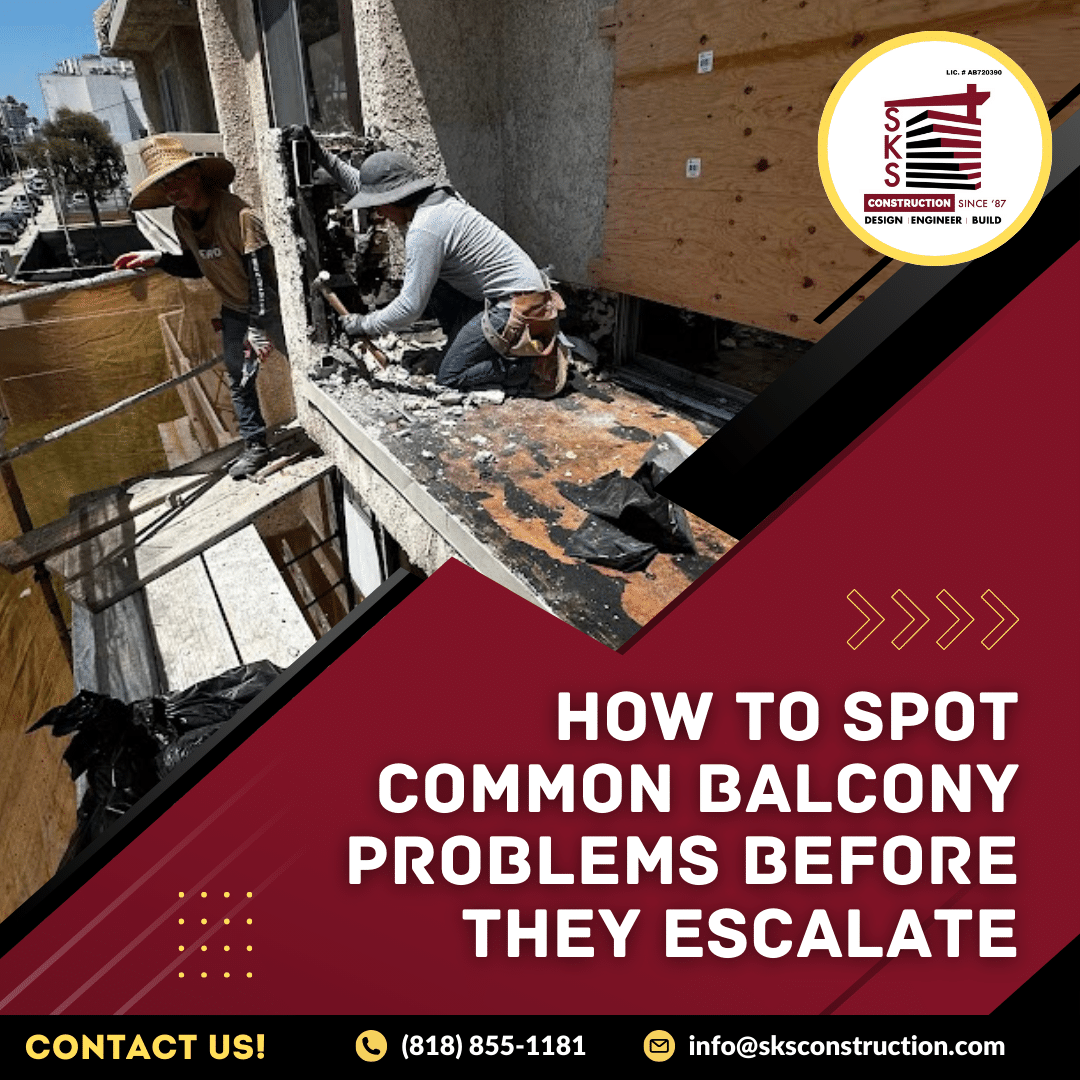
Balconies are essential to many properties, offering outdoor space and aesthetic appeal. However, like any structural component, they require regular attention to maintain safety and integrity. Recognizing early signs of damage can save property owners from costly repairs and potential safety hazards. Here’s a guide to spotting common balcony problems before they escalate.
Water stains on the balcony surface or underside are one of the earliest indicators of water infiltration. Left unaddressed, trapped moisture can lead to:
Tip: Check for discoloration, peeling paint, or mildew growth, which often signal moisture issues.
Cracks can form in concrete balconies due to:
Small cracks may seem harmless but can grow over time, allowing water to seep in and accelerate damage.
Tip: Regularly inspect the surface for hairline fractures or larger, more visible cracks.
Metal railings, supports, and connectors are susceptible to rust and corrosion, particularly in coastal areas or regions with high humidity. Rust compromises the strength and stability of these components.
Tip: Look for red or orange streaks on metal parts, and test the stability of railings to ensure they remain secure.
Loose railings pose a significant safety hazard, especially for balconies at higher elevations. Causes of wobbly railings include:
Tip: Periodically check for movement in railings by gently pushing them.
A sagging or uneven balcony floor can indicate structural issues such as:
Tip: Use a level to check for flatness, or look for visible dips in the surface.
Wooden balconies are particularly vulnerable to warping and swelling caused by moisture exposure. These deformations compromise the structural integrity and aesthetic appeal of the balcony.
Tip: Inspect for wood that appears misshapen, soft to the touch, or discolored.
Flashing and caulking are critical for preventing water from seeping into the balcony’s structure. Over time, these materials can crack, peel, or detach, allowing water to penetrate.
Tip: Examine seams, joints, and edges for gaps or missing sections of flashing or caulking.
For elevated balconies, the underside is just as important to inspect. Look for signs of:
Tip: Pay close attention to areas where the balcony connects to the main structure.
Balcony flooring can deteriorate due to heavy use, weather exposure, and aging materials. Issues like chipped tiles, peeling coatings, or splintered wood can signal deeper problems.
Tip: Address flooring damage promptly to prevent water infiltration and further wear.
Creaking, popping, or groaning sounds when stepping on the balcony may indicate underlying structural weaknesses or loose components.
Tip: Don’t ignore unusual noises, as they often precede more severe issues.
Proactively identifying balcony problems allows property owners to address issues before they become costly or hazardous. Incorporating regular inspections into your property maintenance routine is crucial for safety and longevity.
If you notice any of these signs, consider consulting a certified inspector to evaluate the balcony’s condition and recommend necessary repairs. By staying vigilant, you can ensure that your balcony remains a safe and enjoyable space for years to come.
For expert guidance and balcony inspections and repair services, consider reaching out to SKS Construction, a trusted name in the industry. SKS Construction Company offers comprehensive solutions to ensure your building is prepared for the future. Learn more about SKS California and read SKS Construction reviews to see how they’ve helped property owners across the region.